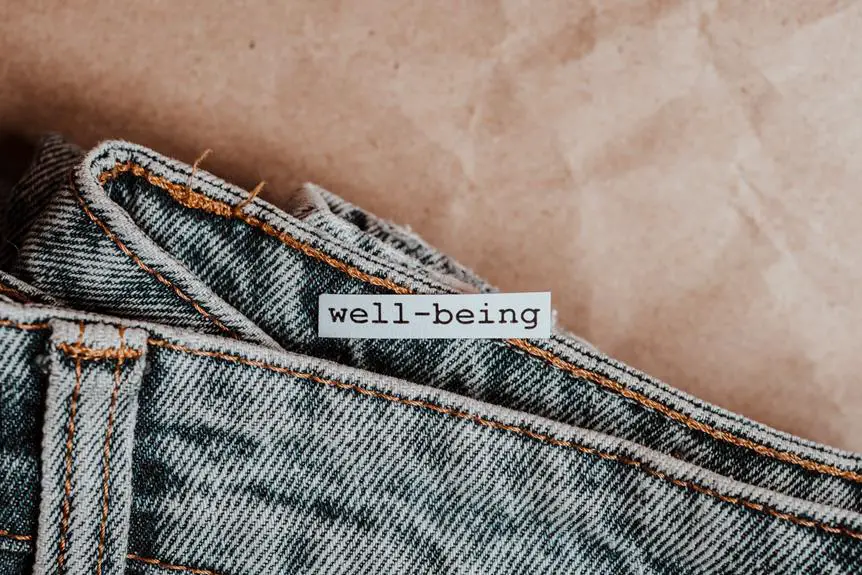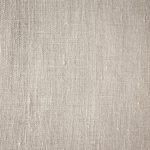Curious about fabrics? Dive into a complete guide on the different types of fabric.
Did you know that there are not only natural fibers and synthetic materials, but also blended fabrics, plant-based and animal-derived fabrics, specialty fabrics, and eco-friendly options?
This comprehensive overview will equip you with the knowledge to understand and distinguish between the various types of fabrics, allowing you to make informed choices for your projects.
Whether you're a seasoned crafter or just starting out, this guide will provide you with a solid grasp of the fabric landscape.
Key Takeaways
- Natural fibers like cotton and hemp offer breathability, comfort, and eco-friendly properties.
- Synthetic materials such as polyester and nylon provide durability, wrinkle-resistance, and moisture-wicking capabilities.
- Blended fabrics combine different fibers to achieve unique textures and enhanced performance.
- Animal-derived fabrics like silk, wool, and leather bring luxurious feel, durability, and unique characteristics to various applications.
Natural Fibers
Natural fibers provide breathability and comfort, making them a popular choice for clothing and textiles. When comparing cotton vs polyester, cotton stands out for its ability to absorb moisture, keeping you feeling dry and cool. It's also hypoallergenic, making it suitable for sensitive skin. On the other hand, polyester is more durable and resistant to wrinkles and shrinking, making it a practical choice for activewear and outerwear.
Aside from cotton and polyester, hemp is gaining attention for its eco-friendly and sustainable properties. Hemp fabric is known for its durability, breathability, and resistance to mold and UV light. It requires less water and no pesticides to grow, making it an environmentally friendly choice. Additionally, hemp has natural antibacterial properties and becomes softer with each wash, making it an excellent option for everyday clothing.
Synthetic Materials
When selecting fabric for your clothing and textiles, you may consider the benefits of synthetic materials, which offer a range of properties suited for various purposes. Synthetic fabrics such as polyester blends and nylon have revolutionized the textile industry with their durability, versatility, and easy maintenance.
Here are some key points to consider:
- Durability: Synthetic materials are known for their strength and resilience, making them ideal for items that undergo frequent use and washing, such as sportswear and outdoor gear.
- Versatility: Polyester blends can mimic the look and feel of natural fibers, offering a wide variety of textures and finishes for different applications, from soft and luxurious to crisp and structured.
- Easy Maintenance: Synthetic fabrics are often resistant to wrinkles, shrinking, and fading, making them low-maintenance and long-lasting, perfect for busy lifestyles.
- Nylon Applications: Nylon, a type of synthetic polymer, is commonly used in the production of hosiery, swimwear, and performance wear due to its lightweight, moisture-wicking, and quick-drying properties.
Understanding the unique benefits of synthetic materials can help you make informed decisions when choosing the right fabric for your specific needs.
Blended Fabrics
Consider blending different types of fabrics to create unique textures and enhanced performance in your clothing and textiles.
Blended fabrics are created by combining two or more different types of fibers, such as cotton and polyester, to achieve the benefits of each material in a single fabric. This results in fabrics that offer the best qualities of each fiber, such as the breathability of cotton and the wrinkle resistance of polyester.
However, caring for blended fabrics requires special attention. When washing, use a gentle cycle and cold water to prevent damage to the fibers. Additionally, consider using a mild detergent to maintain the integrity of the fabric. Blended fabrics should also be dried on a low heat setting to avoid shrinkage or damage.
Always check the care label on your blended fabric garments to ensure you're following the manufacturer's recommendations. By understanding the unique care requirements of blended fabrics, you can ensure that your clothing and textiles maintain their quality and longevity.
Plant-Based Fabrics
When it comes to plant-based fabrics, you'll find a range of options that are both sustainable and breathable.
Cotton, linen, and bamboo are popular choices that offer natural comfort and durability.
Understanding the characteristics of each fabric will help you make informed decisions about the type of plant-based material that best suits your needs.
Cotton, Linen, Bamboo
You frequently encounter cotton, linen, and bamboo as plant-based fabrics in your daily life. These materials offer a range of benefits, making them popular choices for various applications:
- Comfort: Cotton and bamboo fabrics are known for their soft and breathable qualities, making them ideal for clothing and bedding.
- Durability: Linen is highly durable and becomes softer with each wash, ensuring longevity and practicality in everyday use.
- Sustainability: Bamboo is an eco-friendly option, as it grows quickly and requires minimal resources, making it a sustainable choice for environmentally conscious consumers.
- Versatility: Cotton and linen are versatile fabrics that can be used for a wide array of products, from apparel to home furnishings.
Understanding the distinct characteristics of cotton, linen, and bamboo can help you make informed decisions when selecting plant-based fabrics for your needs.
Sustainable and Breathable
Plant-based fabrics like cotton, linen, and bamboo are known for being sustainable and breathable options, making them increasingly popular in various applications.
When it comes to sustainable fashion, these fabrics are favored for their eco-friendly properties. Cotton, though widely used, requires substantial water and pesticide use. Organic cotton, however, is grown without harmful chemicals, promoting ethical production and reducing environmental impact.
Linen, derived from the flax plant, is highly sustainable due to its minimal water and pesticide requirements. Moreover, bamboo is a rapidly renewable resource that grows without the need for chemicals or irrigation.
Embracing these plant-based fabrics not only ensures breathability and comfort but also aligns with sustainable fashion practices, supporting ethical production and environmental conservation.
Animal-Derived Fabrics
When it comes to animal-derived fabrics, there are several key types to consider. Silk, wool, and leather are among the most well-known options.
It's also important to explore sustainable and ethical considerations within this category.
Silk, Wool, Leather
Animal-derived fabrics such as silk, wool, and leather offer a wide range of textures and properties that make them popular choices for various clothing and textile applications. These natural fabrics are luxurious and versatile, providing an elegant touch to any garment or textile product.
Wool, known for its durability and natural insulating properties, is a favorite for warm, high-quality clothing items. Silk, with its smooth and lustrous feel, adds a touch of sophistication to any outfit. Leather, renowned for its durability and timeless appeal, is commonly used in the production of high-quality jackets, bags, and shoes.
Each of these fabrics brings its own unique characteristics, making them highly sought after for a wide range of applications.
- Wool offers warmth and comfort, making it perfect for cozy winter clothing.
- Silk exudes elegance and luxury, adding a touch of sophistication to any outfit.
- Leather provides durability and a timeless appeal, making it a staple in high-quality fashion items.
- Each of these animal-derived fabrics brings a natural, luxurious feel to the garments and products they adorn.
Sustainable and Ethical
Considering the environmental impact and ethical concerns, choosing sustainable and ethical animal-derived fabrics can align with your values and contribute to a more responsible fashion industry.
Ethical sourcing and sustainable production are crucial aspects to consider when selecting animal-derived fabrics. Look for materials that prioritize the welfare of animals, such as wool obtained from ethically treated sheep or silk derived from responsible sericulture practices.
Additionally, seek out fabrics that are produced using sustainable methods, minimizing environmental harm and promoting fair labor practices.
By opting for animal-derived fabrics that meet these criteria, you can support the well-being of animals and the environment while promoting ethical and sustainable practices within the fashion industry.
Your conscious choices have the power to drive positive change and contribute to a more responsible and ethical fashion landscape.
Specialty Fabrics
If you're looking for fabrics with unique properties or specific uses, specialty fabrics, such as waterproof or flame-resistant materials, can be an excellent choice. These specialty fabrics are designed to meet specific needs, offering a range of benefits and applications.
Here are some examples of specialty fabrics:
- Performance Textiles: These fabrics are engineered to provide enhanced functionality, such as moisture-wicking, UV protection, or odor resistance. Whether you're engaging in intense physical activities or simply seeking comfort in your everyday wear, performance textiles can offer advanced performance features.
- Technical Fabrics: Technical fabrics are designed for specialized applications, such as medical textiles, aerospace materials, or industrial protective clothing. These fabrics often possess advanced properties like high tensile strength, chemical resistance, or thermal insulation, making them indispensable in demanding environments.
- Flame-Resistant Fabrics: Ideal for industries where workers are exposed to fire hazards, flame-resistant fabrics provide a crucial layer of protection against burns and injuries.
- Waterproof Fabrics: Whether for outdoor gear or medical supplies, waterproof fabrics are essential for keeping moisture out and maintaining the integrity of the enclosed items.
Specialty fabrics cater to specific needs, making them invaluable for industries and activities that demand exceptional performance and protection.
Eco-Friendly Options
You frequently seek eco-friendly options when choosing fabrics for your projects, as they align with your values and contribute to sustainable practices. Organic textiles are a prime example of eco-friendly fabrics. They're made from natural fibers that are grown without the use of harmful pesticides or synthetic fertilizers, reducing the environmental impact of the fabric production process. Choosing organic textiles promotes sustainability and supports ethical farming practices.
Another eco-friendly option to consider is fabrics made from recycled materials. These materials, such as recycled polyester or upcycled cotton, help reduce the amount of waste in landfills and lessen the demand for raw materials. Using recycled materials in fabric production minimizes the environmental impact by conserving resources and reducing energy consumption.
When selecting eco-friendly fabrics, it's essential to consider their overall sustainability. Look for certifications such as Global Organic Textile Standard (GOTS) for organic textiles and Recycled Claim Standard (RCS) for recycled materials. These certifications ensure that the fabrics meet specific environmental and social criteria, providing you with confidence in the eco-friendly choices you make for your projects.
Frequently Asked Questions
Are There Any Specific Care Instructions for Different Types of Fabric?
For specific care instructions, always check the label. Different fabrics require different treatments. For washing, use cold water for delicate fabrics, warm water for most, and hot water for whites. Follow the label for drying, stain removal, and ironing.
Can Certain Fabrics Cause Allergic Reactions in Some People?
Certain fabrics can cause allergic reactions in some people due to fabric sensitivity. Fabric composition, such as synthetic fibers, can lead to skin irritation. It's important to be aware of potential allergens in clothing materials.
What Are Some Common Uses for Specialty Fabrics?
Specialty fabrics are utilized heavily in the fashion industry and interior design trends. They offer unique textures and patterns, making them perfect for high-end fashion pieces and luxurious home decor.
How Can Consumers Identify and Choose Eco-Friendly Fabric Options?
When choosing eco-friendly fabrics, look for certifications like GOTS and OEKO-TEX. Research sustainable production methods and consider fabric alternatives like hemp or bamboo. Seek out brands with ethical sourcing practices to make informed and responsible choices.
Are There Any Specific Environmental Benefits or Drawbacks to Using Certain Types of Fabric?
When choosing fabric, consider environmental impact and sustainability. Cotton and polyester have drawbacks, like water usage and microplastic pollution. Look for eco-friendly alternatives like organic cotton, hemp, or Tencel for better sustainability considerations.
- Recycling Nonwoven Fabrics: Is It Possible? - July 11, 2025
- Recycling Nonwoven Fabrics: Is It Possible? - July 11, 2025
- Recycling Nonwoven Fabrics: Is It Possible? - July 11, 2025







